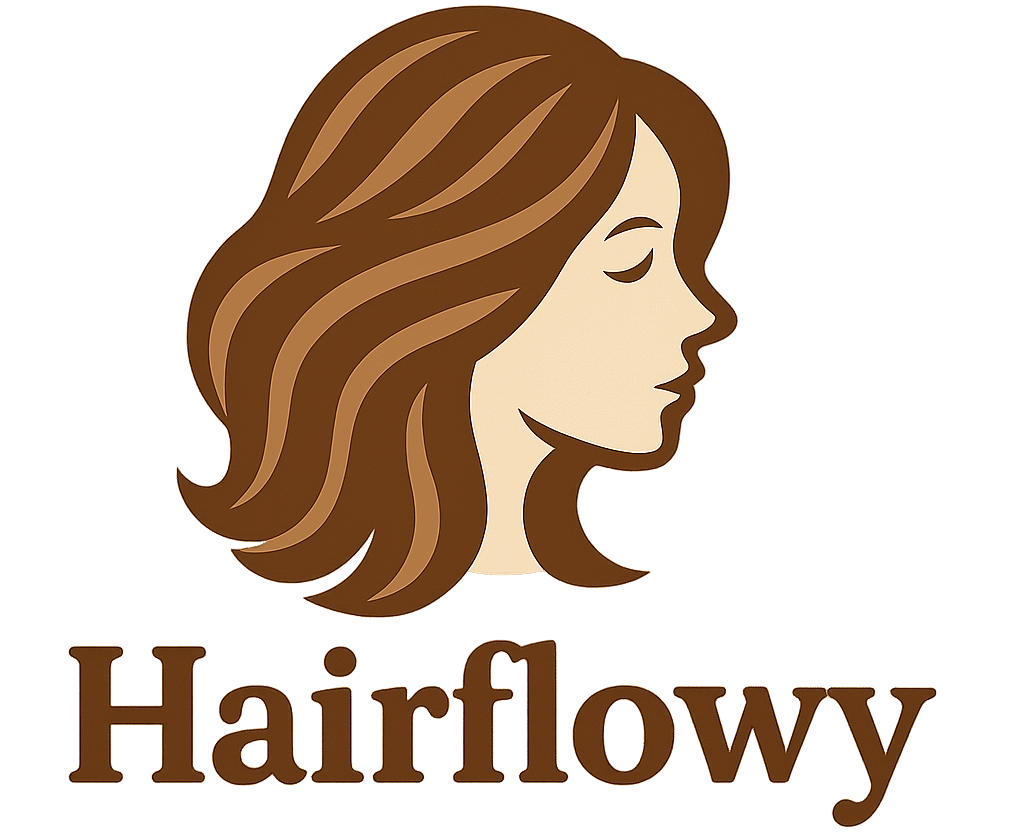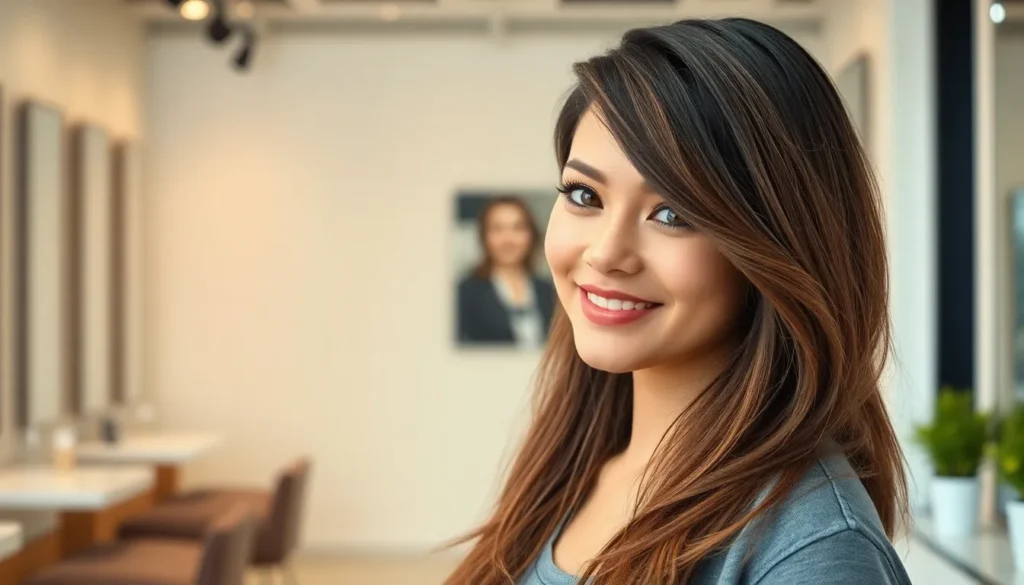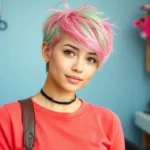Bangs can completely transform your look in an instant. Whether you’re craving a dramatic change or just want to refresh your current style we’ve got the perfect fringe solution for you. From wispy curtain bangs to bold blunt cuts these face-framing styles offer endless possibilities to enhance your features and express your personality.
The right bang style can make you look younger softer or more sophisticated depending on what you choose. We’ll explore the most popular bang trends that are taking over social media and red carpets alike. Each style works differently with various face shapes hair textures and personal aesthetics.
Ready to discover which bang style will revolutionize your look? Let’s jump into the industry of fringe fashion and find your perfect match. You’ll learn how to choose complement and maintain each style for maximum impact.
Blunt Bangs: The Classic Statement Look
Blunt bangs deliver a bold, geometric statement that instantly transforms your entire look. We’re seeing this timeless style make a major comeback across social media platforms and high-fashion runways.
Creating Sharp, Straight-Across Fringe
Precision cutting creates the foundation for perfect blunt bangs that make heads turn. We recommend visiting a professional stylist for the initial cut since achieving that razor-sharp line requires expert technique and steady hands.
Sectioning your hair properly ensures an even, balanced fringe across your forehead. Professional stylists typically section bangs in a triangular shape, starting from the crown and extending to the outer corners of your eyebrows.
Wet cutting techniques allow for the most accurate length measurement and clean lines. Your stylist will likely cut your bangs while damp, then make final adjustments once your hair dries and settles into its natural pattern.
Regular maintenance keeps blunt bangs looking crisp and intentional rather than grown out. We suggest scheduling touch-up appointments every 3-4 weeks to maintain that perfect straight edge.
Best Face Shapes for Blunt Bangs
Oval faces work beautifully with blunt bangs since the straight line creates balance without overwhelming your features. The horizontal emphasis complements the natural symmetry of oval face shapes.
Long or rectangular faces benefit significantly from blunt bangs’ ability to shorten facial proportions. The straight fringe creates a visual break that makes your face appear more balanced and proportioned.
Square faces can rock blunt bangs when they’re cut slightly longer and paired with softer layers around the sides. This approach maintains the bold look while preventing the style from appearing too harsh.
Round faces should approach blunt bangs cautiously, as the straight line can emphasize width. If you have a round face and love this style, consider slightly angled or side-swept variations instead.
Styling Tips for Perfect Blunt Bangs
Daily blow-drying with a small round brush keeps your blunt bangs smooth and prevents cowlicks from disrupting the clean line. We recommend using a heat protectant spray before styling to maintain hair health.
Dry shampoo application at the roots helps absorb excess oil that can make bangs look greasy or separated. Apply dry shampoo the night before washing for maximum absorption and volume.
Strategic trimming at home requires sharp hair scissors and careful attention to detail. Cut small sections at a time, always cutting upward into the hair rather than straight across to avoid choppy results.
Product selection plays a crucial role in maintaining your blunt bangs’ sleek appearance. Lightweight serums and smoothing creams tame flyaways without weighing down your fringe or creating buildup.
Sleeping protection involves using a silk pillowcase or wrapping your bangs in a silk scarf to prevent friction and morning cowlicks. This simple step helps maintain your style overnight and reduces morning styling time.
Side-Swept Bangs: The Versatile Everyday Option
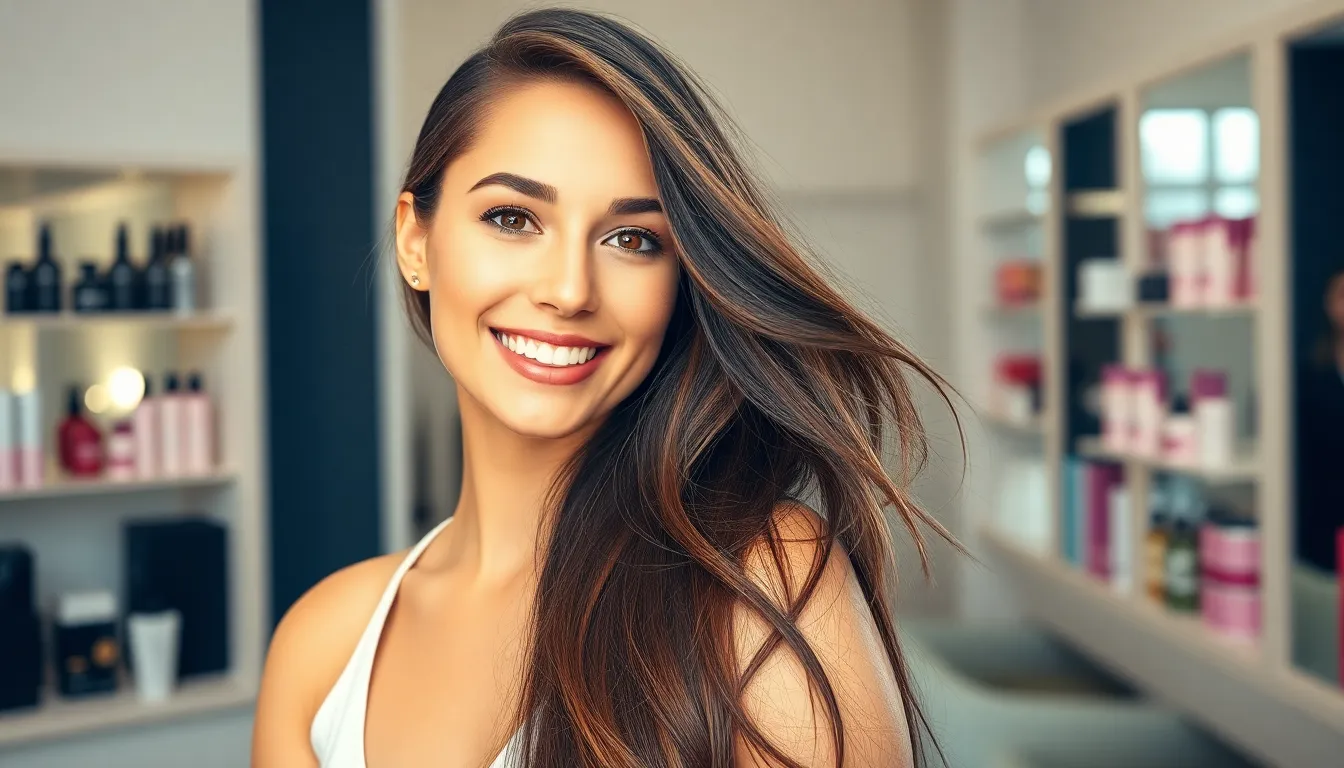
While blunt bangs make a bold statement, side swept bangs offer an effortlessly chic alternative that works for nearly every face shape. These adaptable fringes sweep gracefully across your forehead, creating movement and dimension that can elevate any hairstyle from casual to elegant.
Achieving the Perfect Side Swept Look
Creating flawless side swept bangs starts with cutting them longer on one side to achieve that natural sweep across your forehead. Professional stylists recommend cutting bangs while hair is damp but not soaking wet to ensure accurate length assessment. We suggest asking your stylist to cut bangs at an angle, starting shorter near your natural part and gradually lengthening toward the opposite temple.
Styling products like light hold pomades or texturizing sprays help maintain the desired sweep without weighing down your hair. Blow dry your bangs using a round brush, directing them across your forehead in the direction you want them to fall. We recommend using cool air for the final blast to set the style and add shine.
Maintaining Side Swept Bang Shape
Regular trimming every 3-4 weeks keeps side swept bangs looking fresh and prevents them from growing into your eyes. Unlike blunt bangs that require precise cutting, side swept styles are more forgiving and can often be maintained with minor at home touch ups using hair scissors designed for bangs.
Light hair serums control frizz and keep bangs smooth throughout the day, especially in humid conditions. We suggest applying serum to slightly damp bangs before styling to create a sleek finish. Dry shampoo becomes your best friend for extending the life of your style between washes, absorbing excess oil that can weigh down your fringe.
Incorporating Side Swept Bangs Into Different Hairstyles
Side swept bangs complement virtually every haircut length and texture, making them incredibly versatile for different occasions. Short bob cuts gain sophisticated elegance when paired with longer side swept bangs that graze the cheekbone. Long layered styles benefit from the ever-changing movement these bangs create, adding visual interest to the overall look.
We’ve seen side swept bangs work beautifully with curly textures when cut dry to account for natural shrinkage and spring. Straight hair showcases the clean lines of side swept bangs, while wavy textures create a romantic, effortless appearance. Even updos and ponytails look more polished when side swept bangs frame the face, softening harsh angles and adding feminine charm to structured styles.
Curtain Bangs: The Effortlessly Chic Choice

Curtain bangs offer that perfect blend of sophistication and effortless style that’s captured the attention of celebrities and everyday style enthusiasts alike. These soft, center-parted bangs create a natural, face-framing effect that feels both modern and timeless.
Parting Techniques for Curtain Bangs
Creating the perfect curtain bang starts with mastering the center or slightly off-center part that defines this iconic style. Professional stylists cut these bangs in a distinctive “V” or “U” shape, which allows gravity to naturally create that coveted split effect around your face. Blow-drying with a round brush becomes essential for achieving that polished finish – we recommend directing airflow downward to enhance smoothness and minimize any unwanted frizz. Sectioning your hair into smaller portions gives you better control during the styling and drying process, ensuring each strand falls exactly where it should for that effortless curtain effect.
Face-Framing Benefits of Curtain Style
Curtain bangs excel at accentuating your best facial features while softening areas you’d prefer to downplay. These wispy, blended edges work to highlight your cheekbones, define your jawline, and draw attention to your eyes without creating harsh lines across your forehead. Most face shapes benefit from this versatile style because it naturally adapts to your unique bone structure. Whether you prefer to wear them straight, add some gentle waves, or create more defined curls, curtain bangs seamlessly transition from casual daywear to formal evening looks with minimal effort.
Styling Products for Curtain Bang Maintenance
Maintaining your curtain bangs requires the right product arsenal to keep them looking fresh between salon visits. Heat protectant spray becomes non-negotiable before using any blow-dryer or hot styling tools on your delicate bang area. Texturizing or volumizing sprays add that perfect amount of movement and body, while dry shampoo works wonders for refreshing your bangs between washes. Light, flexible hairspray helps lock in your style without creating stiffness or weighing down the natural movement. Sleeping on silk or satin pillowcases helps maintain your curtain bang shape overnight and reduces morning frizz, while scheduling regular trims every 4-6 weeks keeps the “V” or “U” shape looking sharp and intentional.
Wispy Bangs: The Soft and Textured Approach
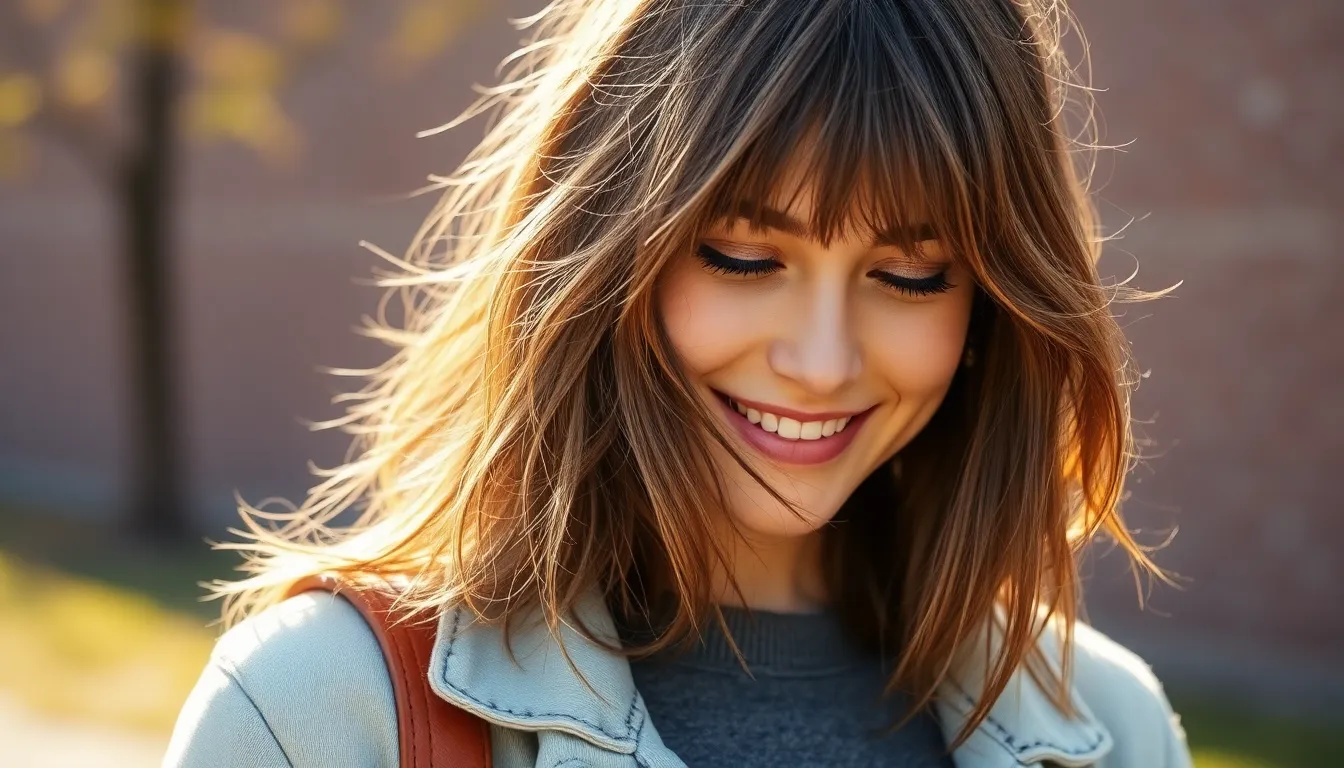
Wispy bangs offer the perfect balance between statement and subtlety with their light, airy texture that softens any face shape. These feathery fringe styles create an effortlessly chic look that’s both modern and timeless.
Creating Feathered, Light-Weight Fringe
Achieving the perfect wispy bang starts with cutting techniques that prioritize texture over uniformity. Stylists use thinning scissors to remove bulk while creating natural movement throughout the fringe. Point cutting creates those signature feathered edges that give wispy bangs their characteristic softness.
Professional texturizing techniques involve cutting into the hair at different angles rather than straight across. This method ensures each strand falls naturally without appearing too heavy or blunt. The key lies in creating varying lengths that blend seamlessly together for that coveted light weight appearance.
Texturizing Techniques for Wispy Bangs
Styling wispy bangs requires products that enhance texture without adding weight to the delicate fringe. Light hold hairspray provides structure while maintaining the natural movement that makes these bangs so appealing. Dry shampoo works wonders for adding volume and texture without creating a stiff or crunchy feel.
Texturizing sprays become your best friend when working with wispy bangs since they enhance the natural feathery quality. Apply these products to damp hair before styling for best results. Avoid heavy creams or gels that can weigh down the delicate strands and eliminate that coveted airy texture.
Blending Wispy Bangs with Different Hair Lengths
Wispy bangs adapt beautifully to various hair lengths because of their versatile nature and soft edges. Long hair benefits from wispy bangs as they create a romantic, face framing effect without overwhelming the overall style. Medium length cuts gain movement and dimension when paired with textured wispy fringe.
Short hairstyles shine with wispy bangs since the soft texture prevents the overall look from appearing too harsh or geometric. The feathery quality adds femininity to pixie cuts and bob styles alike. Layered haircuts work particularly well with wispy bangs as both elements share similar texturizing principles that create natural movement throughout the hair.
Micro Bangs: The Bold and Edgy Statement

Micro bangs represent the ultimate commitment to a daring hairstyle transformation. We see these extremely short bangs reaching only to the middle of the forehead, creating an instantly recognizable and fashion-forward look.
Cutting Ultra-Short Fringe Styles
Precision becomes absolutely critical when creating micro bangs, as even minor cutting errors show dramatically in such short lengths. Professional stylists recommend starting conservatively and gradually cutting shorter, since you can’t add hair back once it’s removed. The cutting technique involves working with small sections and using precise horizontal cuts across the forehead.
Measuring plays a crucial role in achieving the perfect micro bang length, with most stylists marking the desired line before making any cuts. We suggest avoiding DIY attempts for this particular style, as the margin for error is virtually nonexistent. The initial cut should establish the baseline, followed by detailed refinement to ensure evenness across the entire fringe.
Styling Short Bangs for Maximum Impact
Running a flat iron over the ends creates the polished, sleek appearance that makes micro bangs so striking. We recommend using heat protectant products before styling to prevent damage to these delicate, short strands. The styling process requires daily attention, as micro bangs lose their shape more quickly than longer fringe styles.
Texturizing products work differently on micro bangs compared to longer styles, often requiring lighter application to avoid weighing down the short strands. A small amount of smoothing serum can eliminate flyaways and add shine. We find that blow drying micro bangs with a small round brush helps maintain their structured appearance throughout the day.
Face Shape Considerations for Micro Bangs
Oval faces can successfully wear micro bangs because this face shape provides balanced proportions that complement the bold fringe line. We notice that round faces may find micro bangs challenging, as the short length can emphasize facial width rather than creating elongating effects.
Heart shaped faces often work beautifully with micro bangs, provided the forehead isn’t overwhelmingly prominent. Square faces benefit from micro bangs when the jawline is strong enough to balance the dramatic forehead emphasis. We recommend consulting with a professional stylist who can assess your exact facial proportions before committing to this bold style choice.
Long faces might find micro bangs too shortening, potentially creating an unbalanced appearance that emphasizes facial length rather than creating harmony.
Choppy Bangs: The Textured and Modern Look
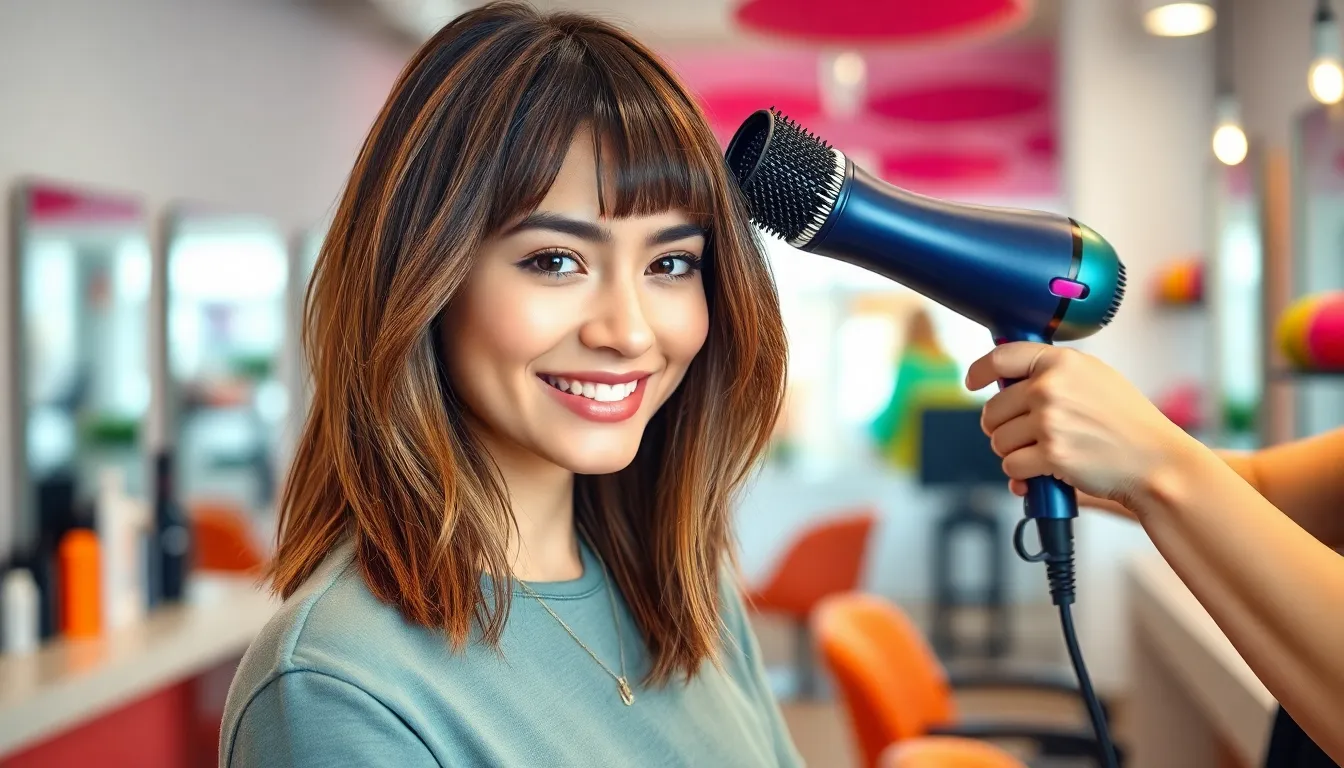
Choppy bangs bring a textured, piecey aesthetic that perfectly captures today’s fashion forward trends. We’re seeing this versatile style everywhere from social media feeds to runway shows because it adds instant edge and dimension to any hairstyle.
Achieving Piece-y, Uneven Fringe
Creating the perfect piecey fringe starts with sectioning your hair properly using a fine-tooth comb. We recommend working with sharp hairdressing scissors held vertically to achieve the signature point cutting technique that creates those coveted uneven layers. Start by determining your desired length, then use small snipping motions to cut into the hair rather than straight across. This vertical cutting method creates natural separation between hair strands, giving you that textured, modern finish we’re all after.
Professional stylists often work in small sections to ensure each piece varies slightly in length, building the choppy texture gradually. You can enhance the piecey look afterward by applying a small amount of texturizing paste or styling wax to define individual strands and emphasize the uneven pattern.
Adding Movement to Choppy Bang Styles
Movement in choppy bangs comes alive when we use the right styling techniques and tools. We suggest using a round brush with your hairdryer to lift hair at the roots, creating natural volume that makes the textured pieces more pronounced. Blow dry your bangs forward first, then sweep them slightly to one side to encourage that effortless, tousled movement.
Styling products play a crucial role in improving the ever-changing quality of choppy bangs. Apply a small amount of pomade or texturizing wax to damp hair before styling to help separate the pieces and add definition. We’ve found that scrunching the product through your bangs with your fingers creates the most natural looking movement, allowing each textured layer to fall independently.
Maintenance Requirements for Choppy Bangs
Maintaining choppy bangs requires more frequent salon visits than traditional straight across styles. We recommend scheduling trims every 3-4 weeks to preserve the textured shape and prevent the pieces from growing too uniform or losing their intentional unevenness. Regular maintenance keeps the choppy effect sharp and prevents your bangs from looking grown out or messy.
Daily care involves washing your bangs more frequently since they sit close to your forehead where oil tends to accumulate. Dry shampoo becomes your best friend between washes, helping absorb excess oil while adding texture that actually enhances the choppy look. We suggest applying dry shampoo to the roots and working it through with your fingers to maintain that piecey separation throughout the day.
Long Bangs: The Subtle Face-Framing Option
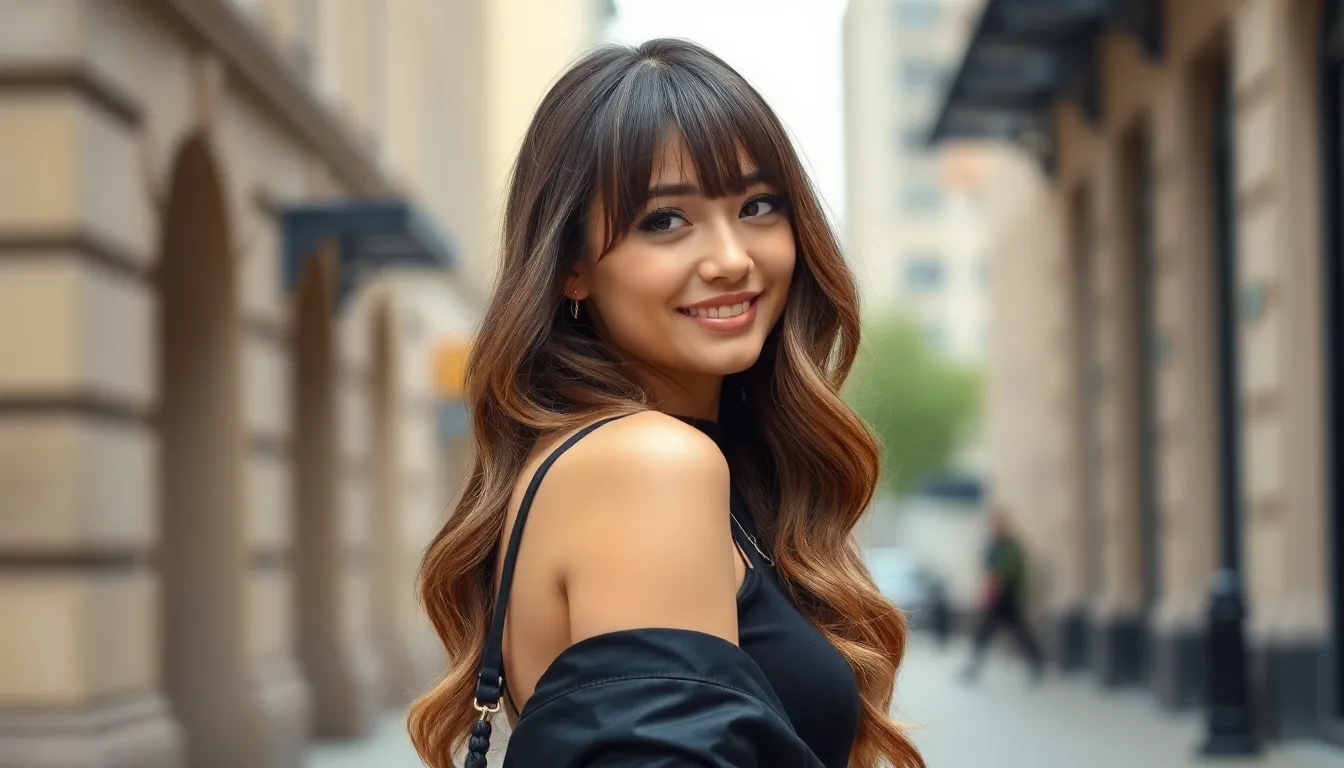
Long bangs offer a sophisticated approach to fringe styling that enhances your features without overwhelming your face. We’ve seen this versatile option gain popularity among those seeking a gentler introduction to bangs or a refined alternative to shorter styles.
Creating Longer Fringe Variations
Long bangs provide endless customization possibilities through strategic layering and texturing techniques. Stylists can create layered long bangs by cutting sections at different lengths, which adds movement and prevents the fringe from appearing too heavy or flat against your forehead. Textured long bangs work exceptionally well with wavy hair textures, as the natural movement enhances the overall blend with your hairstyle.
Bottleneck bangs represent another popular variation where the center portion remains shorter while the sides extend longer, creating a flattering frame that adds volume around your face. Professional stylists often recommend this technique for clients wanting face framing benefits without committing to a full straight across cut.
Length customization allows you to choose how much forehead coverage you prefer, with options ranging from just below the eyebrows to grazing the cheekbones. Each variation serves different styling purposes and complements various face shapes differently.
Transitioning from Short to Long Bangs
Growing out shorter bangs into longer fringe requires patience and strategic styling during the awkward growth phases. We recommend scheduling professional trims every 4-6 weeks to maintain shape while allowing length to develop gradually, preventing uneven growth patterns that can make the transition more challenging.
Hair extensions offer an immediate solution for those wanting longer bangs without waiting months for natural growth. Clip in bangs specifically designed for temporary wear let you experiment with longer fringe styles while your natural hair catches up to your desired length.
Styling products become essential during the transition period to manage unruly growth and maintain a polished appearance. Light hold pomades help control flyaways, while texturizing sprays add grip to shorter pieces that might not lay properly during the growing out process.
Strategic side sweeping can disguise uneven lengths during transition periods, allowing you to maintain a styled look while your bangs develop into the longer fringe you’re targeting.
Styling Long Bangs for Different Occasions
Long bangs adapt beautifully to various styling needs, from casual everyday looks to formal events requiring more polished presentation. Casual styling involves simply sweeping the fringe to one side using your fingers or a wide tooth comb, creating an effortless appearance that works with natural hair movement.
Formal occasions call for more structured approaches where you can pull longer bangs back into your overall hairstyle or secure them with bobby pins for elegant updos. Professional stylists often recommend using light hair serums to control frizz and add shine before formal styling.
Heat styling opens additional possibilities with long bangs, including gentle curling with round brushes during blow drying or using flat irons to create subtle bends that complement your face shape. Always apply heat protectant sprays before using thermal tools to prevent damage to your fringe.
Daily maintenance for long bangs requires minimal effort compared to shorter styles, with most people needing only light brushing and occasional product application to maintain their desired look throughout the day.
Asymmetrical Bangs: The Creative and Artistic Choice
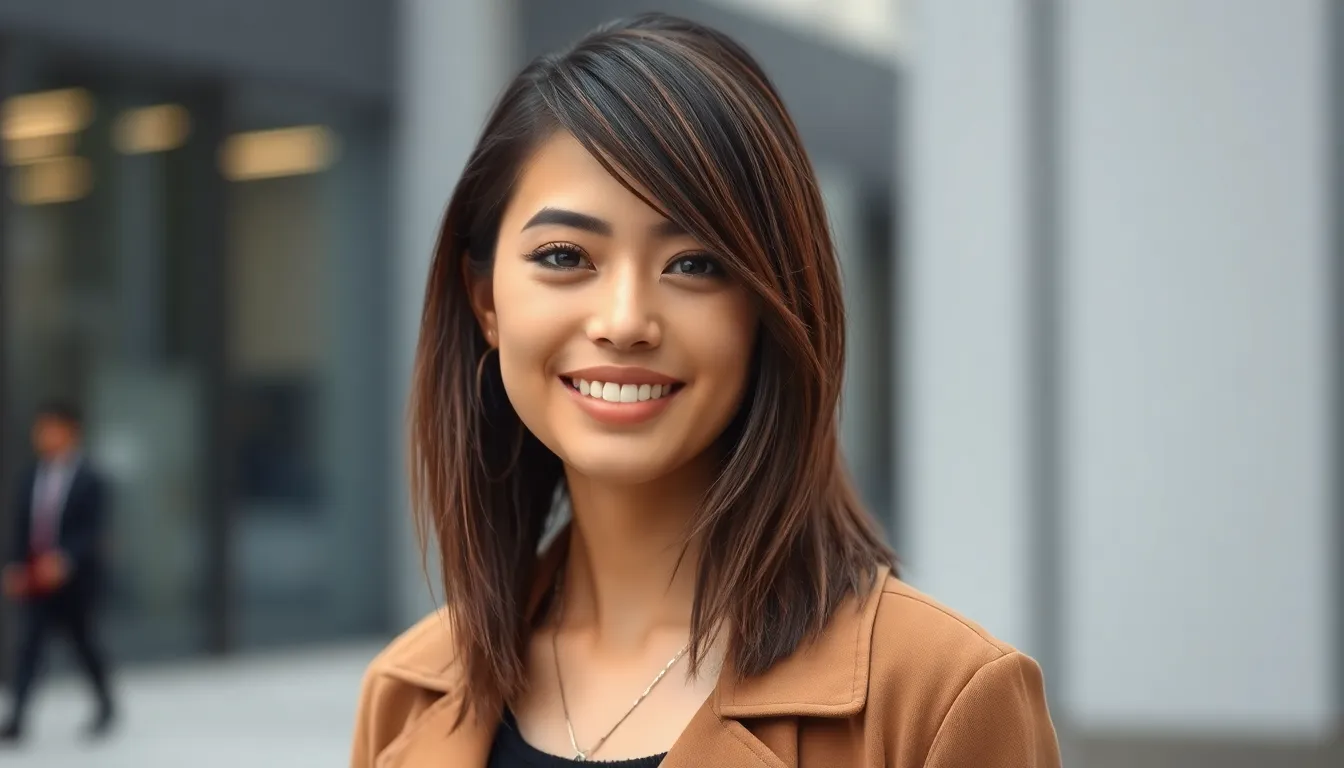
Asymmetrical bangs offer an artistic approach to framing your face while adding distinctive character to any hairstyle. This uneven style creates visual interest by varying lengths across your forehead, making it a versatile choice for those seeking something beyond traditional straight-across cuts.
Designing Uneven Bang Patterns
Creating the perfect asymmetrical pattern requires strategic planning and professional execution. Funky haircuts with asymmetrical light bangs work exceptionally well for those wanting a playful yet sophisticated touch that doesn’t overwhelm their features.
Stylish lobs enhanced by side-swept bangs combine two trending elements into one runway-worthy look that frames your face beautifully. These combinations create movement and dimension while maintaining a polished appearance suitable for both casual and formal settings.
Pixie styles accentuated with edgy fringe transform classic short cuts into modern statements that highlight your facial structure. The uneven lengths add texture and visual weight that complements the pixie’s natural spikiness and creates an effortlessly cool aesthetic.
Versatility makes asymmetrical bangs suitable for various hair types, from straight locks to wavy textures. Whether you’re working with short cuts or long layers, the uneven pattern adapts to enhance your existing style while adding that creative twist you’re seeking.
Balancing Asymmetrical Fringe with Face Shape
Round faces benefit most from side-swept asymmetrical bangs that create elongation and visual length. The uneven pattern draws attention upward while the longer side helps slim your face’s overall appearance.
Square faces find softening effects through pixie cuts with asymmetrical bangs that minimize sharp jawlines and angular features. The irregular fringe creates gentle curves that counterbalance your face’s natural structure.
Oval faces accommodate most asymmetrical styles since their balanced proportions work harmoniously with various uneven patterns. This face shape’s versatility allows for experimentation with different lengths and angles without overwhelming your features.
Heart-shaped faces can use asymmetrical bangs to balance wider foreheads while drawing attention to your eyes. The uneven pattern creates visual weight that complements your face’s natural tapering toward the chin.
Styling Tips for Asymmetrical Bang Maintenance
Texturizing sprays enhance the natural movement of asymmetrical bangs while adding volume and definition to each section. Apply these products to damp hair before styling to maximize their effectiveness and create lasting hold.
Light-hold hairsprays maintain your asymmetrical shape throughout the day without creating stiffness or weighing down the fringe. Focus application on the longer sections that tend to fall out of place more easily.
Regular trims every 3-4 weeks preserve the intentional unevenness that makes asymmetrical bangs so striking. Professional maintenance ensures your fringe maintains its artistic integrity while preventing any sections from growing too long.
Daily styling involves using a small round brush to direct each section into its intended position. Work with your hair’s natural growth patterns rather than against them to achieve the most natural-looking asymmetrical effect.
Heat protection becomes crucial when styling uneven bangs since different lengths require varying amounts of manipulation. Apply protective products before using any heated tools to prevent damage and maintain your fringe’s health and appearance.
Conclusion
Finding your perfect bang style isn’t just about following trends—it’s about understanding what works best for your unique features and lifestyle. We’ve explored everything from bold micro bangs to sophisticated curtain styles and each option offers its own way to transform your look.
The key to successful bangs lies in professional execution and proper maintenance. Whether you’re drawn to the edgy appeal of choppy textures or the classic elegance of blunt cuts remember that regular trims and the right styling products will keep your fringe looking fresh.
Your face shape hair texture and personal style preferences should guide your decision. We encourage you to consult with a skilled stylist who can help you choose and execute the perfect bang style that enhances your natural beauty and fits seamlessly into your daily routine.
Frequently Asked Questions
What are the most popular bang styles trending right now?
The most popular bang styles include curtain bangs, side-swept bangs, wispy bangs, blunt bangs, and micro bangs. Curtain bangs offer sophistication and work for most face shapes, while side-swept bangs provide versatility for everyday wear. Wispy bangs create a soft, romantic look, blunt bangs make a bold statement, and micro bangs offer an edgy, modern appearance.
How often should I trim my bangs?
Bang trimming frequency depends on the style. Side-swept and choppy bangs need trimming every 3-4 weeks, curtain bangs require maintenance every 4-6 weeks, and most other bang styles need touch-ups every 4-6 weeks. Regular trims help maintain the shape and prevent bangs from becoming too long or losing their intended style.
Which face shapes work best with blunt bangs?
Blunt bangs work best on oval, long, and square face shapes. These face types can handle the bold, straight-across cut without overwhelming their features. Round faces should consider angled or side-swept variations instead of straight blunt bangs, as these alternatives provide more flattering proportions and help elongate the face.
Can I cut my own bangs at home?
While minor touch-ups are possible at home, it’s recommended to visit a professional stylist for the initial cut and major trims. This is especially important for styles like micro bangs and blunt bangs that require precision. If you must trim at home, use sharp hairdressing scissors and cut conservatively, removing small amounts at a time.
How do I style curtain bangs properly?
To style curtain bangs, part your hair down the middle and use a round brush while blow-drying to create the signature sweep. Apply heat protectant spray before styling and finish with texturizing products for movement. Use light hairspray to hold the style, and ensure your curtain bangs are cut in a “V” or “U” shape for the best results.
What products work best for maintaining wispy bangs?
Wispy bangs require lightweight products that won’t weigh them down. Use light hold hairspray, texturizing sprays, and avoid heavy creams or oils. A small amount of dry shampoo can add texture and volume. The key is using minimal product to maintain the airy, feathered appearance that defines wispy bangs.
Are micro bangs suitable for all face shapes?
Micro bangs work best on oval and heart-shaped faces, as these shapes can handle the extremely short length without looking disproportionate. Round and long faces may find micro bangs challenging, as they can make round faces appear wider and long faces seem even longer. Consider your face shape carefully before choosing this bold style.
How do I prevent my bangs from looking greasy?
Use dry shampoo between washes to absorb excess oil, especially at the roots. Avoid touching your bangs throughout the day, as oils from your hands can transfer to your hair. Sleep on a silk pillowcase to reduce friction and oil transfer. Wash your bangs more frequently than the rest of your hair if needed.
What’s the difference between choppy bangs and regular bangs?
Choppy bangs feature a textured, piecey appearance with uneven layers, while regular bangs typically have a more uniform cut. Choppy bangs are created using vertical cutting techniques to achieve an intentionally messy, modern look. They require more frequent maintenance and styling with texturizing products to enhance their edgy appearance.
How long does it take to grow out bangs?
Growing out bangs typically takes 3-6 months, depending on your hair’s growth rate and desired length. The process can be managed with regular trims to shape the growing fringe and styling techniques to blend bangs with the rest of your hair. Hair accessories like headbands can help during the awkward growing-out phase.
